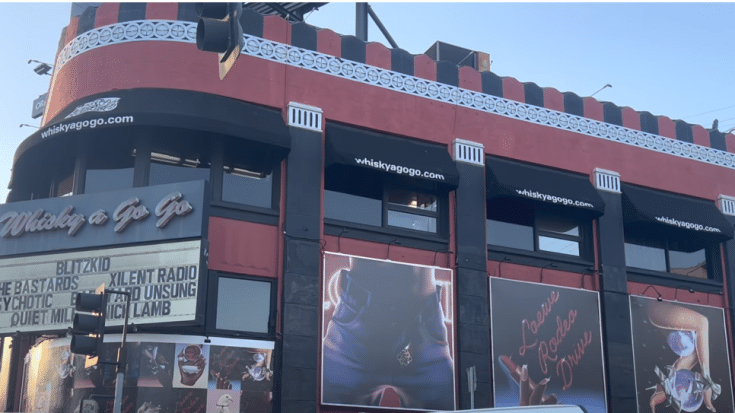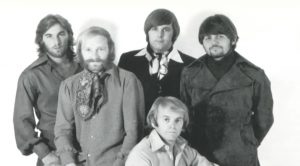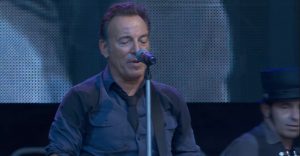Exploring the Iconic History of Whisky a Go Go

via SCOTT ON TAPE - Your Pop Culture Tour Guide / Youtube
The Whisky a Go Go, located on Hollywood’s Sunset Strip, holds a significant place in the history of rock ‘n’ roll. Since its founding in 1964, this iconic nightclub has been at the forefront of various music movements, hosting legendary bands and serving as a launching pad for numerous artists. Let’s take a dive into the wild and influential past of the Whisky a Go Go and explore its unique history.
The Adventurous Life of Elmer Valentine, Founder of the Whisky a Go Go
Elmer Valentine, the founder of the Whisky a Go Go, had a fascinating life himself. From serving in World War II to running nightclubs for gangsters in Chicago, Valentine eventually made his way to Los Angeles. After being inspired by a nightclub in Paris, he brought the idea back to the U.S., leading to the birth of the Whisky a Go Go.
The Whisky a Go Go Opens
In 1964, the Whisky a Go Go officially opened its doors on the Sunset Strip. The club quickly gained national attention and became a hotspot for celebrities like Steve McQueen and Cary Grant. Notably, even the Beatles visited the Whisky during their first U.S. tour. The Doors, initially reluctant to join the Sunset Strip scene, eventually became one of the house acts, further cementing the venue’s reputation.
Go-Go Dancing and the 1960s Craze
The Whisky a Go Go introduced go-go dancing to American audiences, creating a dance trend of the 1960s. It all started when a female DJ named Patty Brockhurst, hired to play records between sets, spontaneously started dancing on a platform. Valentine recognized the potential and added more platforms, turning go-go dancing into an integral part of the Whisky experience.
Mob Connections and Run-Ins
Due to Valentine’s previous associations with gangsters, some of his connections followed him to Los Angeles. The Whisky’s success attracted attention from Chicago, leading to tense situations and even death threats. Fortunately, Valentine’s presence and connections helped diffuse these issues, ensuring the safety of the club and its patrons.
Taking a stand against the establishment of City Hall
The Whisky faced challenges in the 1960s when the Sunset Strip underwent significant changes. Complaints from local businesses about young people and perceived degenerate behavior led to proposals to tear down clubs like the Whisky. Despite peaceful protests, Pandora’s Box, another popular club, was eventually demolished. The era of the Swinging Sixties started to fade.
Links to Charles Manson
Charles Manson, the notorious cult leader, was a regular at the Whisky before gaining worldwide notoriety. His strange behavior and antics caused concern, leading to confrontations with the club’s owners. Mario Maglieri, co-owner of the Whisky, even had a physical altercation with Manson when he encountered him in the club after hours.
The 1970s: Struggles and Punk Rock Resurgence
The Whisky faced challenges in the 1970s as rock ‘n’ roll moved to larger venues and disco dominated the airwaves. Despite attempting to evolve by showcasing cabaret performances, attendance declined, and the club closed temporarily in 1974. However, it reopened in 1976, just in time to become a haven for the emerging punk rock and New Wave scene in Los Angeles.
The 1980s: Sleaze Glam Metal Era
The Whisky’s reopening in 1986 coincided with the rise of heavy metal and the sleaze glam metal era. Bands like Mötley Crüe and Van Halen took the stage, bringing their high-energy performances and over-the-top stage antics to the Whisky. The club became a focal point for the burgeoning Sunset Strip music scene, with bands like Guns N’ Roses, Poison, and Ratt also making their mark on its stage.
The 1990s and Beyond: Alternative Rock and Legacy Acts
As the music landscape shifted in the 1990s, alternative rock took center stage, and the Whisky a Go Go continued to adapt. It became a hub for emerging alternative bands such as Jane’s Addiction, Soundgarden, and Red Hot Chili Peppers. Additionally, the club provided a platform for legacy acts to reconnect with their fans, with bands like The Byrds and The Doors of the 21st Century (featuring surviving members of the original Doors) performing at the venue.
Cultural Impact and Influence
The Whisky a Go Go has left an indelible mark on music and popular culture. Its influence extends beyond its iconic stage, as it has been referenced in numerous songs, films, and TV shows. The club’s name has become synonymous with rock ‘n’ roll history and the vibrant music scene of the Sunset Strip.
The Whisky Today
Despite the passage of time, the Whisky a Go Go continues to be a thriving live music venue. It showcases a diverse range of genres, including rock, punk, metal, and indie, hosting both emerging artists and established acts. The club’s intimate atmosphere and rich history attract music lovers from all over the world.
Preservation of the Legacy
Recognizing its historical significance, the Whisky a Go Go was designated a Historic-Cultural Monument by the City of Los Angeles in 2006. This status ensures its preservation and protection for future generations to experience and appreciate the venue’s iconic past.






















